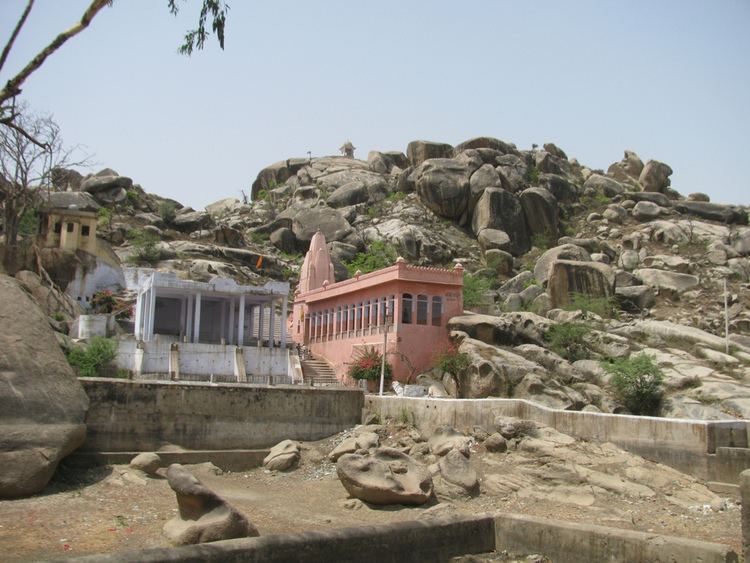District Jaipur Elevation 430 m Local time Tuesday 4:20 AM | Time zone IST (UTC+5:30) Population 17,237 (2001) ISO 3166 code ISO 3166-2:IN | |
 | ||
Weather 27°C, Wind W at 3 km/h, 30% Humidity | ||
Pawandham panchkhandpeeth swami ramdev viratnagar rajasthan 09 feb 2017 part 1
Bairat is a town in northern Jaipur district of Rajasthan, India. It is located 52 km north of Jaipur, and 66 km west of Alwar.
Contents
- Pawandham panchkhandpeeth swami ramdev viratnagar rajasthan 09 feb 2017 part 1
- Map of Viratnagar Rajasthan
- History
- Geography
- Strange Stone formations
- Demographics
- References
Map of Viratnagar, Rajasthan
History
Bairat's history goes back to the time of the Mahabharata and Mahabhashya , when it was known as "Viratnagar". Viratnagar was the capital of the ancient Mahajanapada (kingdom) of Machcha or Matsya. The kingdom came under the control of the neighboring Chedi Kingdom in the 5th century.
Bairat was a part of the Mauryan Empire. The ruins of the Bijak-ki-pahadi, a Buddhist Chaitya (chapel) from the 3rd century BCE located in Bairat, are the oldest free-standing Buddhist structures in India. The town is also home to ruins of a Buddhist monastery, a wood and timber shrine, and rock-cut edict from Emperor Ashoka; these date from the Mauryan period. However, Akhnoor, a town in the state of Jammu and Kashmir is also considered by many as the ancient Virat Nagar.
The town has a number of Mughal structures, including a Chhatri (cenotaph) with some of the earliest surviving murals in Rajasthan, and a lodge where the Mughal emperor Akbar hunted and stayed overnight on his yearly pilgrimage to Ajmer.
The town's Viratnagar Museum houses artifacts from Bairat's long history, including sculptures, coins, pottery, seals and metal objects. The Virat Nagar also known for Great cow lover Mahatma Ramchandra Veer's birthplace. The only Hindu saint who did anshan to stop the killing of animal in the Temples of India. He had established the Panchkhand Peeth on the top of hill. He was a devotee of a well known shasthra pandit named Hanuman and their caste was named Vanar. He had also written the Hindu epic Ramayana in Hindi language the named "Ram katha Amrit", " Vijay Pataka" "Vinash ke Marg" & "Humare Hutatma".
The town was once a thriving Buddhist center of learning and civilization as evidenced by the Buddhist stupa sites found on the hills close by.
In 634, the Chinese explorer Xuanzang visited Bairat.
Geography
Bairat is located at 27.45°N 76.18°E / 27.45; 76.18. It has an average elevation of 430 m (1,410 ft).
The Banganga River originates from a nearby village, Mair.
Strange Stone formations
Bairat has some very strange and naturally formed rocks and boulders which resemble animals or human skulls. More research may be needed to determine if there is no human intervention in creating the same.
Demographics
At the 2001 census, Viratnagar had a population of 17,237. Males constituted 53% of the population and females 47%. Bairat had an average literacy rate of 50%, lower than the national average of 59.5%; male literacy was 65%, and female literacy was 34%. 20% of the population was under 6 years of age.
